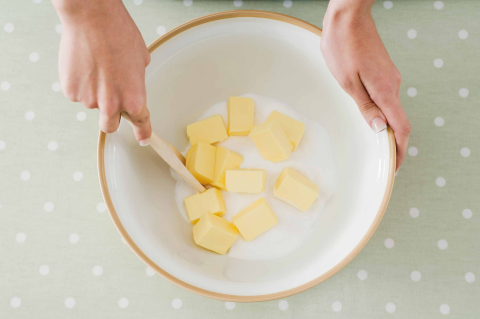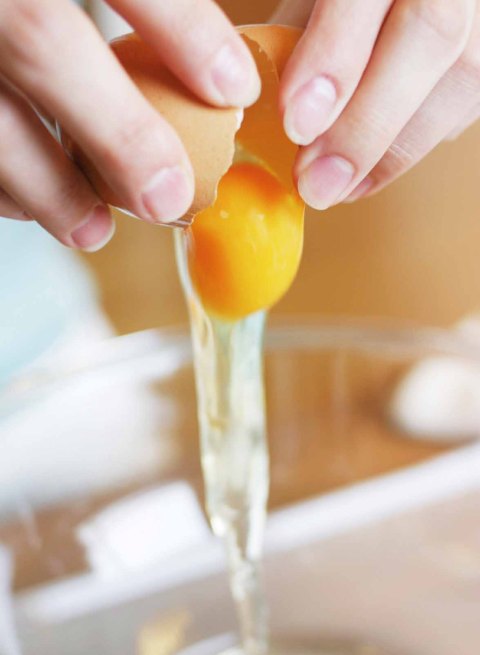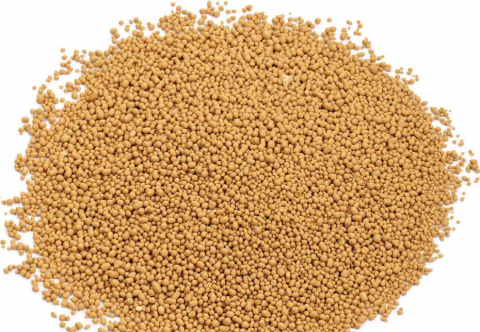Pastry chefs dish out tips that will transform you from baking noob to dessert diva.



Pastry chefs dish out tips that will transform you from baking noob to dessert diva.
The Experts

Daniel Tay, founder of Foodgnostic, Old Seng Choong and Cat & The Fiddle

Erica Yap, chef and co-owner of Two Bakers

Lena Chan, chef and co-owner of Mad About Sucre

Pang Kok Keong, chefowner of Antoinette
FLOUR

The Different Types
Plain flour: Also known as all-purpose flour. Has an intermediate gluten level which makes it suitable for most baking or cooking needs.
Cake flour: It has the lowest protein content, and is suitable for sponge cakes and mooncake skins.
Top flour: Similar to cake flour, it has an extra-fine quality that is ideal for chiffon cakes, crepes and Swiss rolls.
Bread four: High in protein and gluten. Besides baking bread, it can be used to make dense fruit cakes.
Sifting Flour
Even if the recipe does not call for it, you should always sift the flour. “Given Singapore’s high humidity, the flour gets lumpy easily. And if it has been stored for quite some time, sifting also lets you check for flour beetles!” says Daniel Tay, founder of Foodgnostic, Old Seng Choong and Cat & The Fiddle.
Measuring It Out
As baking is about precision – a difference in quantity might affect the outcome – it is best to measure by weight, instead of using cups. Ask two people to measure a cup of flour, and the resulting weight might vary, depending on how tightly (or not) they pack the flour in! But if you must use cups, Erica Yap, chef and co-owner of Two Bakers, says: “Scoop and fill the cup full. Then level the top with the back of a knife.”
Substituting Plain Flour with Wholemeal Flour
“I wouldn’t recommend the substitution of wholemeal flour for most types of cakes as its structure is different from cake flour, and it may cause the cake to collapse,” says Daniel. The only type of cake that might be able to accommodate wholemeal flour substitution is a pound cake, at a maximum of 30-40 per cent of the total flour amount. Tarts and pie crusts are more forgiving, and can accommodate up to 50 per cent substitution.
Storage
“Flour should be stored in an airtight container, in a cool and dry area. It should not be kept beyond the expiry date,” says Daniel.
BUTTER

Beating Butter
Before beating the butter, cube it first, says Lena Chan, chef and co-owner of Mad About Sucre. Adding a block of butter into the mixer would take a longer time to work in, and that introduces more heat, which might affect the texture of your dessert.
Butter Substitutes
It depends on what you are making. Daniel says lard can usually stand in for butter when making pastries. But there are cases when lard doesn’t work, for instance, when making buttercream. If you’re lactose-intolerant, it’s best to look specifically for recipes formulated with your needs in mind.
When Recipes Call for Sticks and Cups of Butter…




MILK

Full-cream Vs Skimmed Milk
When a recipe calls for full-cream milk, don’t replace it with skimmed milk, as your cake might turn out different in texture and flavour, says Lena.
Homemade Buttermilk
Buttermilk is usually used to keep cakes moist, says Erica. If you can’t find it at supermarkets, make your own: Add 1 tbsp of lemon juice or vinegar to 1 cup of milk, and let it sit for 10min before using.
Chilled Vs Room Temperature
While it’s always best to check the recipe, Erica says that ingredients like milk and cream should be kept chilled until right before use. Others, like mascarpone, buttercream and eggs, are typically used at room temperature.
Tip
If you don’t like the tangy flavour sour cream adds to your cake, replace it with the more neutraltasting creme fraiche, says Erica.
EGGS

Separating Eggs
Professionals like Erica zip through separating dozens of eggs in a jiffy by first breaking all of them in a bowl, and scooping out the yolks with a gloved hand. If a bit of yolk gets into the bowl, Daniel uses an egg shell to gently scoop it out. Using fresher eggs helps too, as they have firmer yolks and are easier to separate, says Lena.

The Right Amount
When there are minor discrepancies in weight between what you have and what the recipe calls for, it is always good to follow the recipe accurately, says Erica. To compensate for the difference, break another egg and mix the yolk and white together, then measure out the required amount.

Storing Eggs
Eggs should be stored in a cool, dry place where the temperature is constant. “Keeping them in the fridge exposes them to changes in temperature (especially if the door is opened and closed several times a day), which may cause them to go bad more quickly,” explains Daniel.
Tip
Fresh eggs are best for most cakes and pastries, but an “old” egg white is preferred as it will be more stable when making meringues, says Pang Kok Keong, chef-owner of Antoinette.
RAISING AGENTS

Baking Soda and Baking Powder
Both are leavening agents but they cannot be used interchangeably. Kok Keong elaborates: “Baking soda needs an ‘acid’ ingredient to activate it. Baking powder, on the other hand, is baking soda with added acid compound and cornstarch.”
Checking the Freshness of Baking Soda
If your baking soda is just a few days past its expiry date, Daniel has a super-easy method to check if it’s fresh enough to use: Drop some baking soda into a mixture of hot water and vinegar – it should bubble up. The more bubbles, the fresher the baking soda.

Dry Active Yeast Vs Instant Yeast
The granules of dry active yeast are usually larger and need to be dissolved in water, Kok Keong explains. Those of instant yeast are finer and can be added directly to the recipe. When it comes to yeast, stick to what the recipe calls for.
BAKING Q&A
Chefs share their tips on bakeware and baking techniques.

Which is better – non-stick or silicone bakeware?
When it comes to bakeware, Daniel and Lena agree that non-stick is best. “It bakes more evenly than silicone,” explains Lena. Although, for mini pastries, silicone bakeware does equally well, Daniel says.
When should I use the fan function in the oven?
The fan function is best used for butter cakes, and pastries like tarts and cookies, says Daniel. Baking with the upper and lower heat elements, on the other hand, is preferable for sponge cakes as the heat in the oven is regulated more gently.

How do you bake cakes on the upper and lower racks evenly?
While it’s okay to turn a cake tin around for more even baking, Daniel advises against swopping cake tins from rack to rack, as some cakes might collapse in the process. For butter cakes, cookies and tarts, use the fan function for even baking.
Can I double or halve the ingredients in a recipe to make a bigger or smaller cake?
Caution is key. For certain items like whipped cream and meringue, it is harder to achieve Baking Q&A the optimal results when the amount is decreased, says Erica. And when the recipe is halved, the consistency may be wrong, or the batter may be difficult to handle, Daniel adds. If you need a bigger cake, bake two cakes, and cover the sides with cream to make them look like one, he says.

How do I keep fruits and nuts from sinking to the bottom of the cake batter?
Daniel’s advice is to use a stronger type of flour, such as bread flour, to prevent the fruits and nuts from sinking. “You can substitute 20-50 per cent of the total amount of flour with bread flour, but the more bread flour you use, the denser the cake will become.”
WHEN IT GOES WRONG

If Your Cookies Are… … stuck to the pan. Butter the pan more thoroughly next time. Or, the cookie dough may not have been chilled and rested properly. Cookie dough with a high butter content should be chilled for at least two hours before baking. … not brown enough. Turn the temperature up slightly, and shorten the baking time.
If Your Cake Is… … domed. The batter may be overmixed, or there might not be enough leavening agents. Check if you’ve followed the recipe correctly. … burnt. The temperature is too high. Lower the temperature next time.
BEST SUPPLY SHOPS

For Ingredients and Bakeware: Phoon Huat
12 locations islandwide, including 171 Bencoolen Street, tel: 6338-1143. Phoon Huat is one of the leading wholesale suppliers of confectionery ingredients to restaurants and bakeries; you can find most baking ingredients and bakeware there, at reasonable prices.
For Hard-to-find Ingredients: Secrets Fine Food
#01-02, 55 Tiong Bahru Road, tel: 6221-2107. If you’re in the mood to splash out on the best artisanal ingredients, Secrets Fine Food is your best bet. It prides itself on sourcing straight from boutique producers. This is where to go to if you’re hunting for the likes of vanilla beans from Madagascar, fig puree, and handchurned butter from France.
For Tools and Gadgets: Temple Street
Both Sia Huat (7 Temple Street, tel: 6223-1732) and Lau Choy Seng (23 Temple Street, tel: 6223-5486) are located on the same street, so if you can’t find something in one shop, you can always pop into the other. This is where professional chefs head to, and these two shops stock a wide range of tools and gadgets.
For Decorative Bits and Bobs: Bake It Yourself
9A Circular Road, tel: 6100-2253. Knock yourself out – it’s three storeys of bakeware and accessories at this colourful shophouse just behind Boat Quay. It has novelty candles, a huge array of cookie cutters, edible ink markers, all sorts of tools for working with fondants and sugar flowers, cupcake boxes and more.























